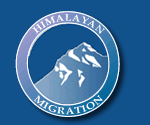

News release, 31 January 2004
Preparations for the expedition continue apace. Equipment is being organized and at last we have nearly assembled all the appropriate Oxygen equipment which has been technically the most difficult bit. The ‘rarest’ item, an o2 tank booster pump has been very kindly loaned to us by hp-air.
Some members of the Medex 2003 Hongu expedition have given us much valuable advice regarding the supply and pitfalls of locally obtained oxygen in Nepal.
We have selected Gerbing’s heated clothing as the most suitable for our needs. Gerbing’s European distributor has given us a generous discount on the retail price of their equipment.
Alpha parachute in Madrid are very kindly lending us a ballistic parachute for the trike.
Warp-Drive inc. is very kindly lending us a propeller and some spare blades for the trike. Warp-Drive props are renowned for their durability which is of considerable concern when we will be using the dirt strip at Syangboche. A prop strike on takeoff there would be potentially catastrophic as there is nowhere to go apart from a huge ravine full of rocks the size of houses…
adventureweather.com have very kindly said that they will provide us with meteorological information for the expedition. This weather service is part of a joint-venture project between Explorersweb, SMHI, and Weathernews Inc. and tailor-made daily by professional meteorologists. It is translated from satellite data and images acquired several times daily from one of Europe's main weather centres and reports are sent daily to the sat phones of participating expeditions.
Prof. Edward E. Hindman, Ph.D. of the City College of the City University of New York has given us much valuable advice on the weather conditions we expect to encounter in our target area. Prof. Hindman is currently trying to obtain some specialist equipment which can be carried in the trike to make condensation nucleus (CN) measurements in association with Tribhuvan University in Kathmandu.
Bailey Aviation are in the final stages of making our first ‘high speed’ trolley. It is impossible to foot-launch the hang-glider at the sort of altitudes we will be operating at so it is launched from a three-wheeled ‘trolley’ which is left behind when the glider takes off. Our trolley must be capable of 50 or 60 MPH on dirt without being difficult to control. It must also be ‘stoppable’ on a steep incline, both in the event of a tow-line break and immediately after a successful launch.
Schedule of events
A trip to Italy is scheduled for the beginning of March to do a session in the Italian Airforce’s hypobaric chamber in Rome.
We will then be conducting a series of high-altitude tests outside Rome. The aim is to do at least one aerotow to 30,000 ft.
All equipment is to be shipped to Nepal by air on 1 April.
We hope to be on-site at our base camp in Lukla by the 20 April.
Historical Meteorological data suggests that there may be three or four ‘windows of opportunity’ for the attempt between late April and the onset of the Monsoon in late May / early June. The two most significant factors are to avoid the early onset of low level cloud around our landing sites, and to have winds at summit altitude below 15 Kt.











